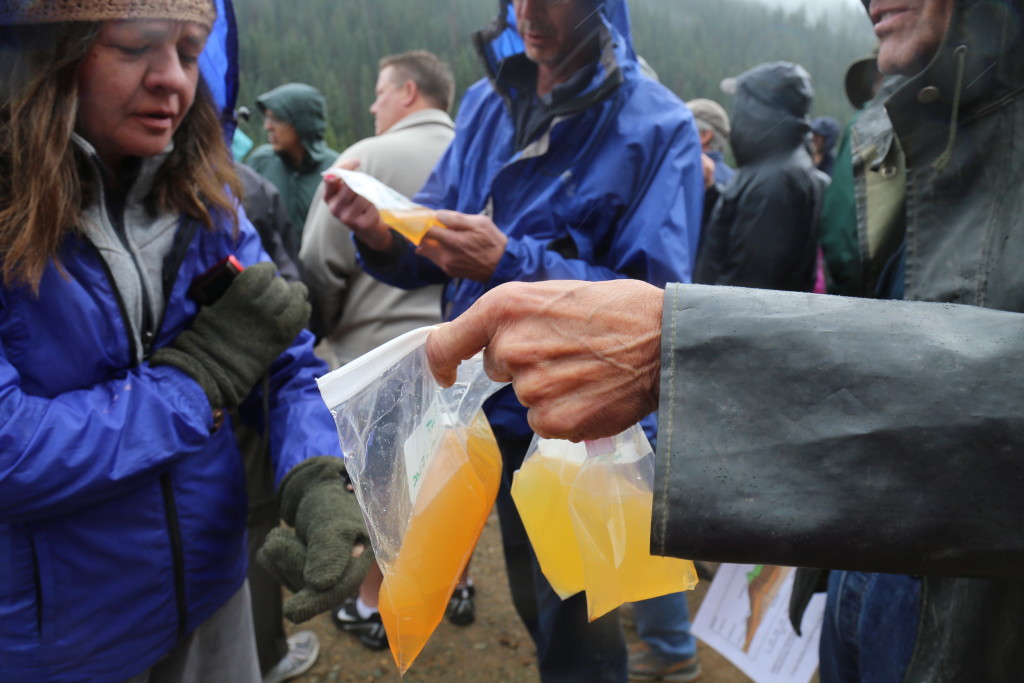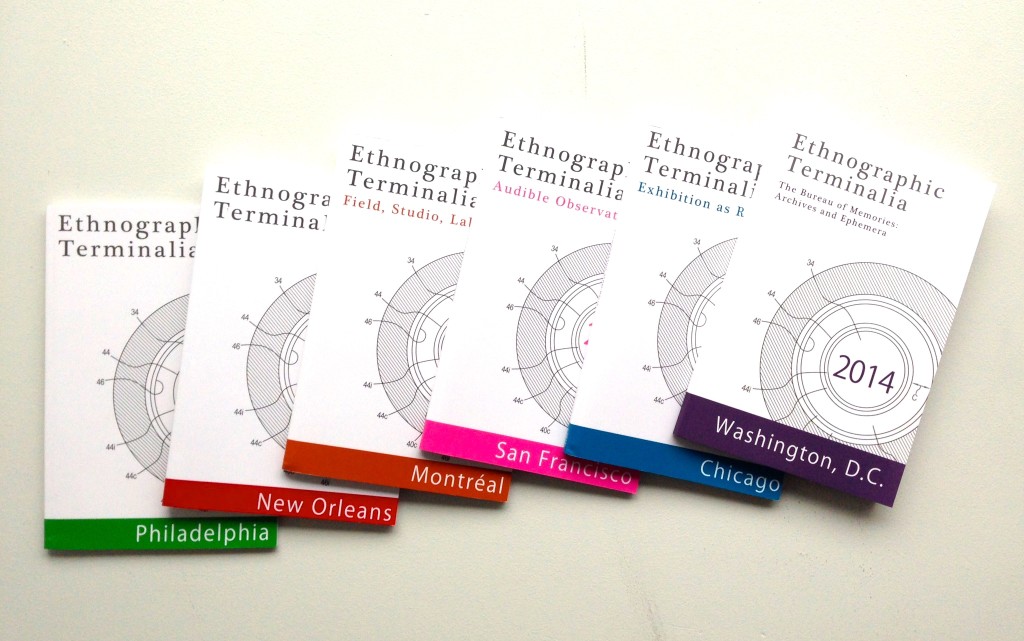
© Teresa Montoya, 20
Tó Łisto / Yellow Water
Since the 1850s, hard rock minerals in the Rocky Mountain region were aggressively extracted in the service of westward expansion. On August 5th, 2015 an EPA subcontractor working at the abandoned Gold King Mine breached a retaining wall releasing over three million gallons of toxic mine waste. From the discharge point in Cement Creek the water flowed south into Silverton, CO—a town designated as National Historic Landmark District for the mining activity that made the town famous. Since the spill locals have remained ambivalent about a likely superfund designation which some fear will affect the tourist economy.
From Cement Creek water flows into the Animas River towards Durango, CO. Within days of the spill hundreds of images of mustard colored water proliferated on social media networks. An especially iconic image shows a group of three kayakers floating near Bakers Bridge in Durango—signaling the suspension of an active outdoor recreation industry and galvanizing responses from both environmentalists outraged by extractive processes and conservative pundits looking for any excuse to shame the EPA.
Traveling south past the New Mexico state line the Animas converges with the San Juan River in Farmington, NM—an ancestral place referred to by regional Diné as Tótah meaning “between the waters.” Since before American settlement these waters sustained life for the myriad Indigenous communities living along its banks and watersheds. Today, a common phrase proclaimed by young Diné activists is “Tó éí ííńáát’é,” a phrase that translates to “water is life” to indicate the importance of water not only for daily sustenance but also as a sacred entity crucial for our survival as Indigenous peoples living in the aftermath of industries and infrastructures brought by settler expansion.
Through my photographic documentation, I attempt to make explicit the tragic and sometimes ironic associations of the appearance of yellow water brought by the Gold King Mine spill. Symbolically and literally, the yellow path of the spill connects Indigenous and non-Indigenous communities alike; however in the months following its discharge, “yellow water” has come to reflect different purposes and ideologies. Furthermore, the power of the image, both visualized and remembered, re-activates a haunting trauma for Diné communities associated with the legacy of uranium mining in the region and prior spill events.
In this photo essay I provoke questions around accountability, faced by both ethnographers and filmmakers, who encounter toxic events and structures. By documenting imagery of the land and waterscapes one year after the Gold King Mine spill, many of the immediate toxic threats are no longer visible yet still persist unseen. I query the modes by which we represent these once visible traumas and what their invisibility might reveal about the perils of their enduring presence and how to visualize them.
Biography
Teresa Montoya (Diné) is pursuing her PhD in Cultural Anthropology at New York University where she is also earning a certificate in Culture and Media. In 2013, Montoya produced her first documentary film titled Doing the Sheep Good that traces the return of iconic Navajo-made films, produced in the 1960s visual anthropology experiment Through Navajo Eyes, to their community of origin. Currently Montoya is working on her second short film, The Day Our River Ran Yellow/ Tó Łitso, a Diné centered visual meditation on the land and waterscapes affected by the Gold King Mine spill in August 2015. Themes of environmental toxicity and regulatory politics raised in this film are central to her dissertation project on the discourses of legal and cultural empowerment that inform alternative political formations within and on the borders of the Navajo Nation. More broadly her research interests also include: sovereignty and jurisdiction; biopolitics and personhood; and Indigenous social movements. Her doctoral coursework and research has been generously supported by funding from New York University, the Ford Foundation, the Wenner Gren Foundation, and the National Science Foundation.
http://anthropology.as.nyu.edu/object/anthro.teresamontoya

